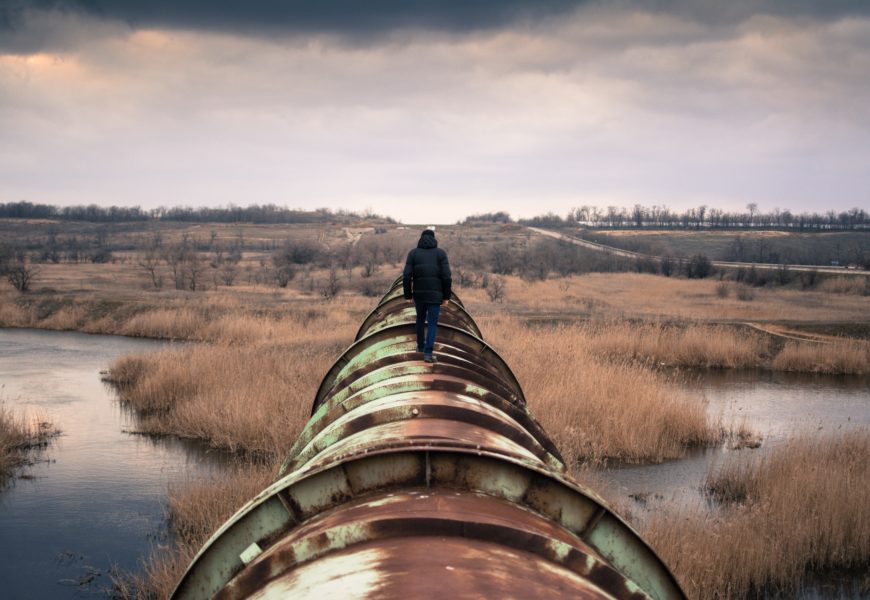Often times, when an important issue needs to be discussed and someone says “no one is talking about it,” Indigenous communities are, but no one is listening. For example, on Oct. 29 the Keystone Pipeline leaked 383,000 gallons of crude oil near the town of Edinburg, North Dakota. This spill is one of the largest to occur in the state, with the total amount of leaked oil amounting to that of half of an Olympic-size swimming pool. A mere two weeks after the leak occurred, the pipeline returned to service. The company in question, TC Energy (formerly known as TransCanada), said in a statement that the up-and-running pipeline will operate at “reduced pressure with a gradual increase in the volume of crude oil moving through the system.” This particular pipeline is designed to carry around 23 million gallons daily and is part of a system that is working to include the proposed “Keystone XL” pipeline that would transport oil from western Canada to terminals on the Gulf Coast). This spill did not take place along the controversial XL pipeline addition (which is still seeking approval), but on the already existing portion in North Dakota. Although Karl Rockeman, director of the state Department of Environmental Quality, stated that the spill had been contained and no water was affected, it still coated an estimated half-acre of wetland and does not take away from the frequency or severity of oil spills. This is the second major incident for the pipeline system in the last two years, accompanied by 407,000 gallons leaked in 2017, and 16,000 gallons leaked in both 2011 and 2016, according to The New York Times. The pipeline’s quick return to operation is concerning as the extent of damage and the official cause still remains unknown.
This pipeline has been the subject of many environmental protests. Its existence and further construction pose a threat to many animals and their habitats, the drinking water of nearby communities, and the sacred lands of Native American tribes. It could accelerate the release of greenhouse gases because more pipelines allow more crude oil to be extracted at faster rates, according to National Geographic. Recall the protests near the Standing Rock Indian Reservation in 2016 that were met with rubber bullets and tear gas from police in riot gear, resulting in hundreds arrested as well as injured. Native Americans have been at the forefront of this resistance, fighting to protect their land and voice warnings in regards to the inevitable spills that would take (and have taken) place alongside the continued construction, use, and expansion of the Keystone Pipeline. As stated by Catherine Collentine, the associate director of the environmental organization Sierra Club in an interview with The New York Times, “it’s not a question of whether a pipeline will spill, but when”. The Keystone pipeline began official operations in 2010 and carries crude oil from Alberta, Canada to Texas. The XL extension is currently inching its way towards approval as members of Native American tribes work to prevent its construction. While former President Obama rejected the initial proposal in 2008, President Trump gave it the green light shortly after assuming the presidency.
Native American tribes filed a lawsuit against the Trump administration in 2018 in an attempt to invalidate the Keystone XL pipeline permit. Members of the Fort Belknap Indian Community of Montana and the Rosebud Sioux Tribe of South Dakota claim that there was no effort to study how the 1,200-mile pipeline project through their territories would affect their unique water system and sacred lands. According to court documents, “the proposed Pipeline will cross the ancestral lands, sacred sites, and historic sites of the tribes of Fort Belknap.” What’s more, there has been no analysis of the potential impact of spills on tribal citizens or their cultural sites, which is a violation of the National Environmental Policy Act, and the National Historic Preservation Act. The lawsuit pointed to the three previously mentioned instances of leaks in the pipeline system to highlight the dangers posed by contamination from a rupture or spill. Such voices of concern were ignored when the Nebraska Supreme Court approved the XL pipeline plan in August of 2019. Thankfully, as per The New York Times, their ruling is not the final word as a federal lawsuit is still at work in Montana in an attempt to prevent construction.
News of the recent spill circulated on social media, including various posts with “… and no one’s talking about it” tacked onto the end. Often times, when “no one is talking about it” Native American and Indigenous groups are, but no one is listening. The systematic expulsion of Indigenous communities from their lands is a historical process that continues today. This process functions by prioritizing the agendas of companies such as TC Energy at the expense of Indigenous voices and integral environmental systems on Native ancestral lands. Indigenous narratives are continually silenced in the name of allegedly essential infrastructure and development projects that only stand to serve the few and further marginalize the other. To protect Indigenous rights is to protect the environment; giving Indigenous people their land back is positive climate action. •









